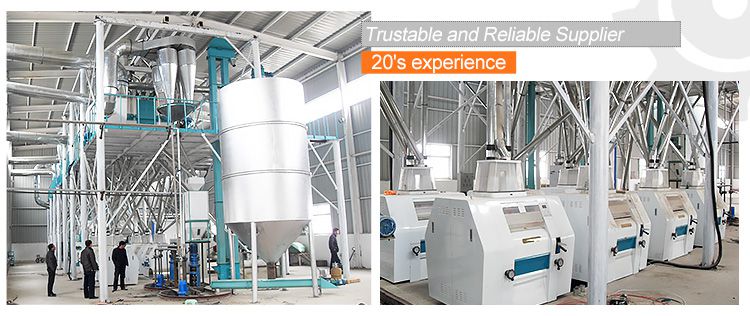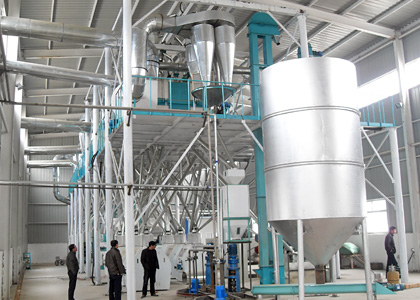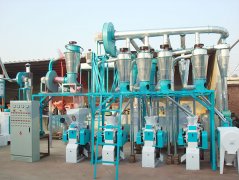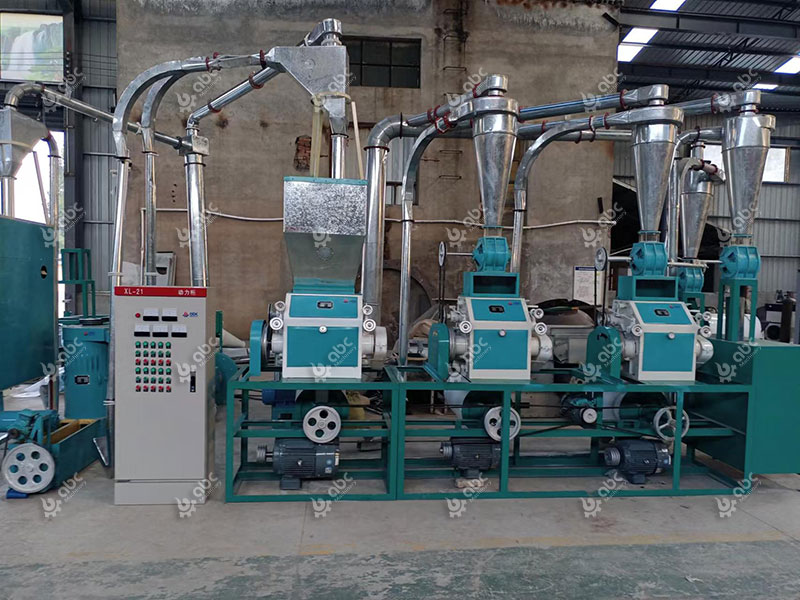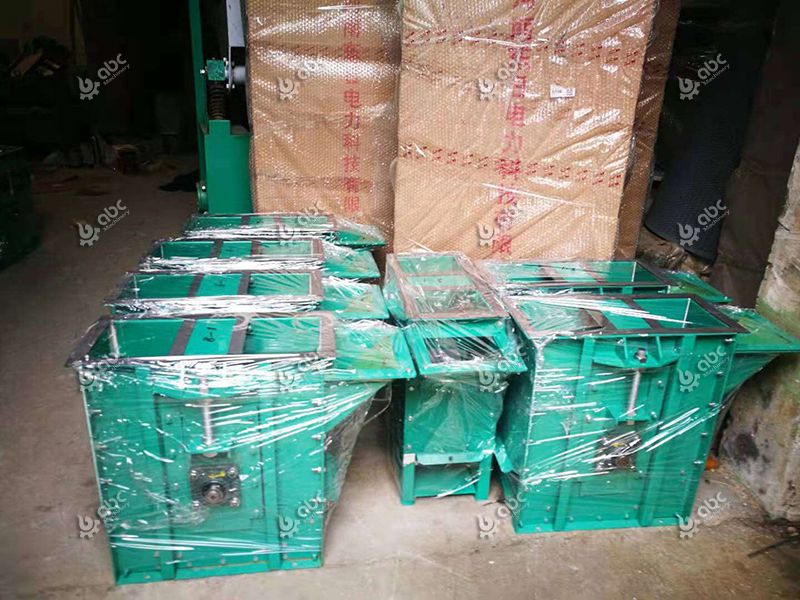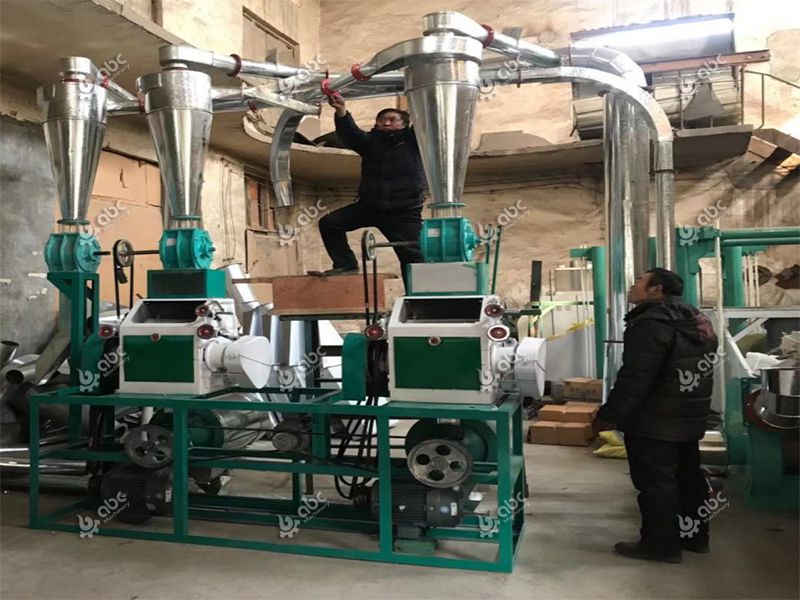Corn Flour Processing: Market Demand & Product Positioning
As a staple food raw material with global consumption, corn flour plays a vital role in both household kitchens and industrial food production. With the rising population in emerging markets (especially in Africa) and the expanding application of corn flour in snacks, baked goods, and animal feed, the corn flour processing industry is facing unprecedented growth opportunities.
But here’s a critical question: How can entrepreneurs in this sector accurately grasp market demand trends and position their products and equipment to maximize profits? This article will delve into these core issues, combining regional case studies and equipment solutions to provide actionable insights for anyone looking to start or expand a maize milling business.
What Drives the Global Demand for Corn Flour Processing? Regional and Demographic Trends

African Corn Flour Milling Market Outlook & Regional Demand Hotspots
The demand for corn flour processing is not uniform across regions—it is shaped by population size, dietary habits, and local agricultural policies. Understanding these drivers is the first step to tapping into market potential.
Regional Demand Hotspots: Uganda, Tanzania, and South Africa
Africa has emerged as a key growth market for the corn flour processing industry, with countries like Uganda, Tanzania, and South Africa leading the demand:
-
Uganda: As a major maize-producing country, Uganda has a strong demand for small-scale maize milling solutions. Local entrepreneurs often start with small scale maize milling machine in Uganda to serve rural communities, where fresh corn flour is a daily staple. According to industry data, the number of small maize milling business in Uganda has grown by 15% annually in recent years, driven by low entry barriers and high local demand. Practical guidance for launching such a plant is available through resources tailored to Ugandan entrepreneurs. (learn more about starting a maize flour processing plant in Uganda )
-
Tanzania: Urbanization in Tanzania has boosted demand for commercial corn flour. Large supermarkets and food manufacturers prefer standardized corn flour, which requires medium-to-large maize processing plant. Additionally, maize milling machine price in Tanzania is a key consideration for businesses, with most opting for cost-effective yet high-capacity models.
-
South Africa: South Africa’s mature food industry drives demand for specialized corn flour (e.g., for maize meal and snacks). The market here favors automated maize milling machine, such as large scale flour mill machine, to meet high-volume production needs. Regional industry reports highlight successful applications of such automated equipment in local facilities.
Demographic and Consumption-Driven Demand
Demand also varies by consumer group, creating niches for different processing solutions:
-
Household users: Small families and rural households prefer compact, affordable equipment like mini corn milling machine or electric corn grinder. These tools are easy to operate and require minimal space, making them ideal for on-demand corn grinding.
-
Commercial users: Bakeries, feed factories, and food processors need high-efficiency machinery such as corn grinding mill, maize flour making machine, or grains grinding machine. These devices can handle large batches and ensure consistent flour quality, which is critical for industrial production.
Key Demand-Driving Factors
The global growth of the corn flour processing industry is fueled by four main factors:
-
Population growth: Emerging markets (e.g., sub-Saharan Africa) have a growing population, increasing the demand for staple foods like corn flour.
-
Dietary diversification: Corn flour is no longer limited to traditional dishes—it is now used in gluten-free products, snacks, and animal feed, expanding its market scope.
-
Government support: Many African governments offer subsidies or tax breaks for agricultural processing businesses, encouraging investment in maize milling machine and corn processing plant.
-
Technological advancement: Modern maize milling machine (e.g., automated maize flour milling machine) reduces labor costs and improves production efficiency, attracting more entrepreneurs to the industry.
How to Position Corn Flour Products? From Small-Scale to Large-Scale Solutions
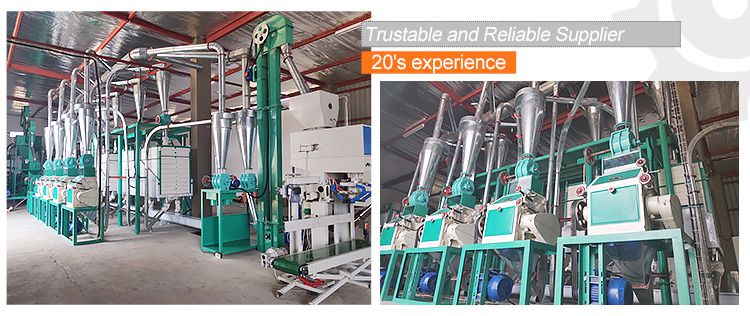
20TPD Commercial Maize Flour Mill Plant - Customized for Regional Markets
Product positioning is critical for success in the corn flour processing industry. It involves matching your production scale, product type, and equipment to the needs of your target market. A misaligned positioning strategy can lead to overcapacity or unmet demand—so how do you get it right?
Positioning by Production Scale
Your business size should align with local demand and your budget. Below are three common positioning models:
-
Small-scale positioning: Target rural communities or small towns with mini corn milling machine, small maize milling machine, or small scale maize milling machine. This model requires low initial investment (usually $500–$5,000) and is easy to manage. It is ideal for entrepreneurs with limited capital, such as local shop owners or farmers. Resources for initiating this type of venture are accessible for local operators. (Read More: Start up Your Own Small-scale Maize Flour Mill)
-
Medium-scale positioning: Serve regional markets with maize milling machine that has a capacity of 10–50 TPD (tons per day). This model suits urban areas where demand is higher but not yet large enough for a full-scale plant. It often requires a maize milling business plan to secure funding. Sample plans designed for maize milling operations can be obtained to support funding applications.
-
Large-scale positioning: Cater to national or export markets with large scale flour mill project, complete maize processing plant, or corn processing plant. These facilities use advanced maize milling machine (e.g., 80 TPD models) and require significant investment ($50,000–$500,000). They are suitable for experienced entrepreneurs or companies looking to dominate a regional market. Real-world examples of such facilities are documented in regional industry case studies.
Positioning by Product Type
Corn flour products can be tailored to specific uses, allowing you to target niche markets:
-
Edible corn flour: For human consumption (e.g., flatbreads, porridge). This requires strict quality control, including a thorough cleaning process before production. Detailed protocols for this cleaning stage are outlined in industry best practice guidelines. (Learn More: Cleaning Process before Corn Flour Production)
-
Maize meal: A coarser product popular in Africa. The maize meal production process differs slightly from corn flour, requiring specialized grinding components in the maize milling machine.
-
Industrial corn flour: For animal feed, paper making, or biofuels. This product prioritizes cost over fine texture, so you can use more affordable corn grinding machine or corn grinder machine.
Comparison of Equipment for Different Positioning
| Production Scale | Equipment Type | Key Features | Applicable Scenarios | Reference Price Range | Equipment Sourcing Guidance |
|---|---|---|---|---|---|
|
Small-scale |
Mini corn milling machine |
Compact, 0.5–2 TPD, manual/electric |
Rural households, small shops |
$500–$5,000 |
Industry suppliers specializing in small-scale, household-friendly milling equipment |
|
Medium-scale |
Maize flour making machine |
10–50 TPD, semi-automated |
Regional cities, small factories |
$10,000–$50,000 |
Suppliers offering medium-capacity systems optimized for regional market demand |
|
Large-scale |
Large scale flour mill machine |
50+ TPD, fully automated, high efficiency |
National markets, export businesses |
$50,000–$500,000 |
Vendors providing large-scale automated milling systems with export-grade production capabilities |
What Key Factors Influence Equipment Selection in Corn Flour Processing? Price, Scale, and Regional Adaptation
Choosing the right maize milling machine or corn mill machine is a make-or-break decision for your business. It requires balancing three key factors: cost, production scale, and regional adaptability.
Price Considerations: Balancing Cost and Quality
Corn milling machine price and maize milling machine price are top concerns for entrepreneurs, but low prices should not come at the cost of quality:
-
Avoid cheap, low-quality machines: These often break down frequently, leading to production delays and additional repair costs. For example, a low-cost corn grinder machine may produce uneven flour, reducing product value.
-
Compare regional prices: Prices vary by location—for instance, maize milling machine price in Tanzania is lower than in South Africa due to import tariffs. Regional supplier directories can help compare pricing across East African markets to find cost-effective options.
-
Invest in after-sales service: Choose suppliers that offer maintenance and spare parts to avoid downtime. Suppliers prioritizing after-sales support are recommended for long-term operational stability.
Scale Adaptation: Matching Equipment to Your Business Plan
Your maize milling business plan (e.g., maize milling business plan in uganda) should guide your equipment choice:
-
If your plan targets small-scale production, opt for small maize milling machine or electric corn grinder.
-
If you plan to expand to large-scale production, invest in a complete maize flour processing business plan and corresponding large scale flour mill machine. Business plan templates specific to regional maize milling operations (like Uganda) are available through industry resources.
Regional Adaptation: Equipment for Local Conditions
Machinery must adapt to regional infrastructure and maize varieties:
-
Power supply: In areas with unstable electricity (e.g., rural Uganda), choose diesel-powered maize milling machine or machines with low power consumption.
-
Maize quality: African maize often has higher moisture content, so select maize milling machine with drying functions. Comprehensive guides to the complete maize flour production process detail the benefits of such drying features for local maize types.
Step-by-Step Equipment Selection Guide
-
Define your target market and production capacity (e.g., 2 TPD for rural Uganda, 50 TPD for urban South Africa).
-
Research local demand for corn flour types (edible vs. industrial) using regional market surveys or consumer feedback.
-
Compare corn milling machine price and maize milling machine features from multiple suppliers, focusing on quality and durability.
-
Check if the equipment is compatible with local infrastructure (power, water) by consulting with regional engineering experts or equipment dealers.
-
Review customer feedback and after-sales service options to assess supplier reliability.
-
Finalize your choice and integrate it into your maize milling project proposal, ensuring alignment with budget and production goals.
If you need help drafting a maize milling business plan pdf, selecting the right maize milling machine, or understanding the maize flour production process, industry-specific resources and guides are readily available. These tools can help streamline your planning process and set your business up for long-term success.
Start your profitable maize milling journey today!


